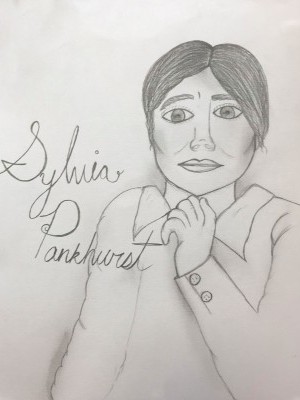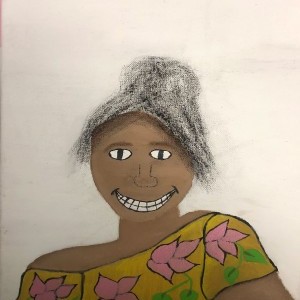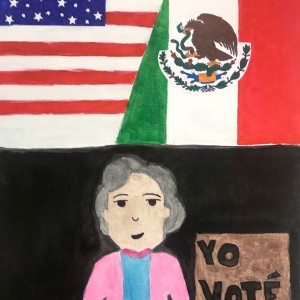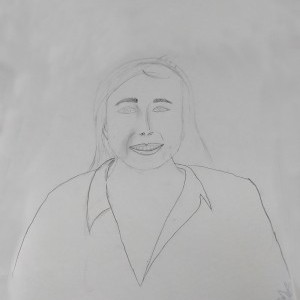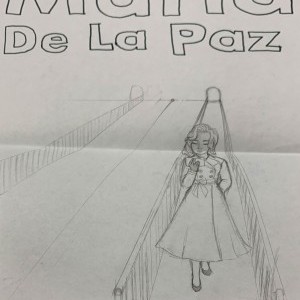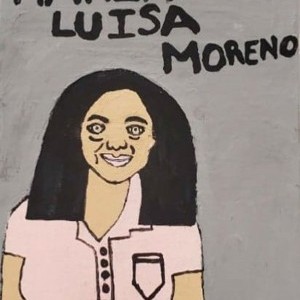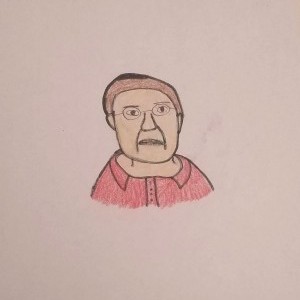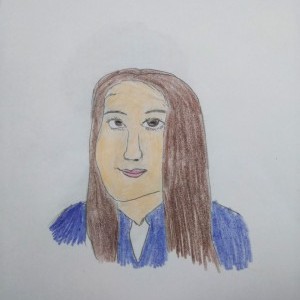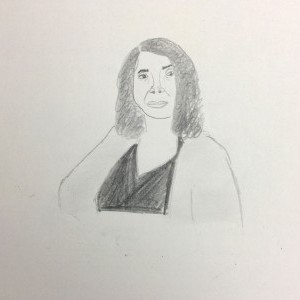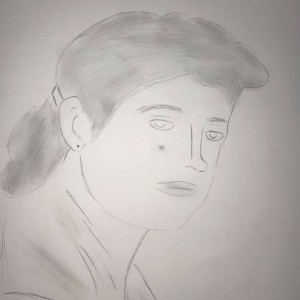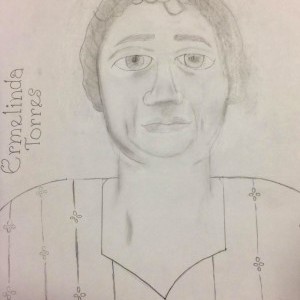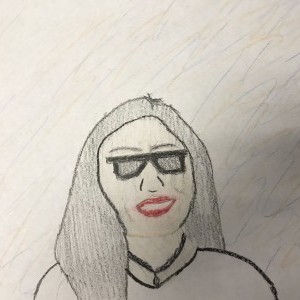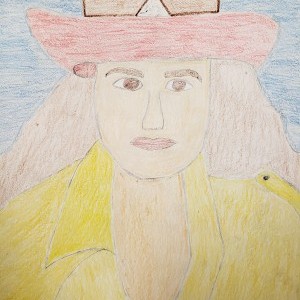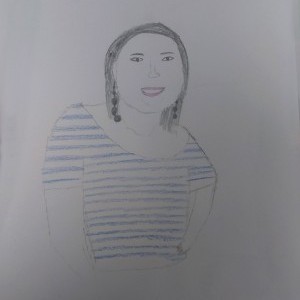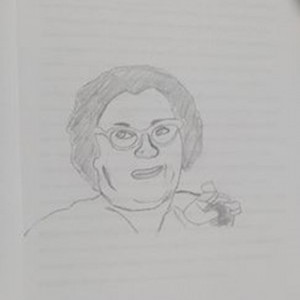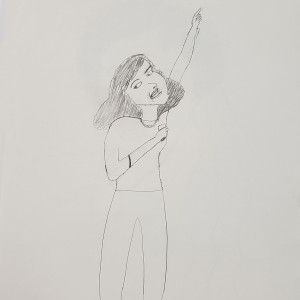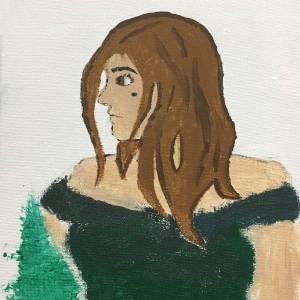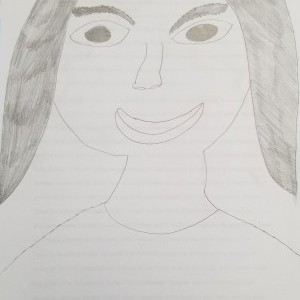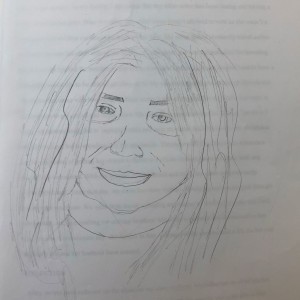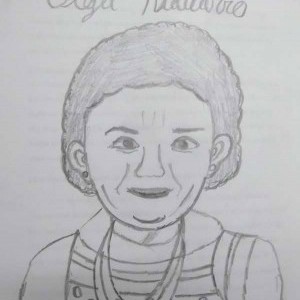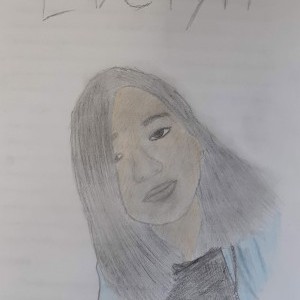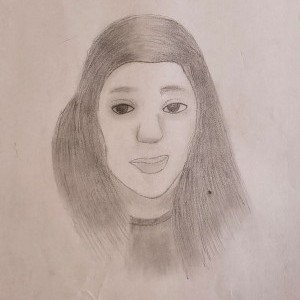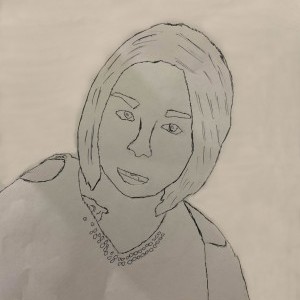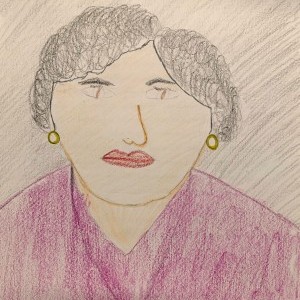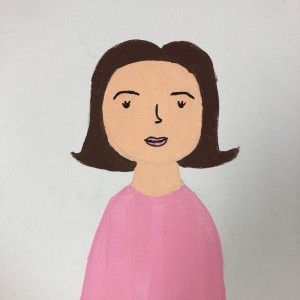Delilah Ramos
García Early College High School | Laredo, TX | 10th Grade
Inspirational Family Member
Maria, My Grandmother
Back in the day, many women didn’t have the opportunity to vote in the United States. Many of them were denied the right because of their gender. Today, more than 59% of the voters for democrats are women. Not many people think voting is special, but it means that you have a voice in your country. I will be speaking about the very respectful and lovely first woman to vote for my family.
Maria Guadalupe Ramos was born on February 12, 1935 in Laredo, Texas. Her parents were Martha and Francisco Ramos. At a young age, Maria’s parents divorced so she lived a rough childhood. She was not an only child though. She had three brothers and one sister. She would spend most of her school days with her mother and vacations with her father. Due to this, she would often stay in other family members’ houses. This was a danger to Maria, but her parents never listened. After she was sexually abused in one of her stays, she learned that she needed to have a voice.
She voted at the age of 21. This was in 1956 and Nixon was running against Eisenhower. She made the decision of voting for Nixon, but Dwight won. When she first voted, she felt like she finally had a voice. Her mother was very proud of her for trying to help the country in any way she could. Her mother was not able to vote since she immigrated from Mexico to give her children a better life. She was denied this right because she wasn’t a US citizen and she was a woman. Maria wanted to be the one to vote since her mother couldn’t. After the first election, she continued to vote. She felt that with voting, she had a voice unlike when she was younger.
Now, women aren’t denied the right to vote because of the ones who fought for us in the 1800s. They will always be remembered by my grandmother and all the women of the US. Voting is very important from my perspective. I believe men don’t appreciate it like women do because they’ve always had the right and didn’t have to fight for anything. For example, Sylvia Pankhurst founded the Woman’s Suffrage Movement so women could have the right to vote. It was very difficult, but not impossible. Voting doesn’t only pertain to the president. Many people vote for many other things. It could be for the mayor, senate, or even a high school prom king or queen. Voting has now become such an influence in our lives. This is because everyone prefers for the decisions to be made fairly instead of poorly by one powerful person. The voting system is very complicated and not many think it is fair but, now everyone can vote for whomever they think is the best option.
Historical Figure I Admire
Sylvia Pankhurst
Before 1920, women were not allowed to vote, but men were. Women were just seen as property with no voice or rights. Although segregation had ended, women were still left out even if they were colored or white. Everything started changing when the Woman’s Suffrage Movement was held in Seneca Falls, New York in 1848. Many women contributed to this movement but today I will be speaking about a very important contributor to the Suffragette movement.
Estelle Sylvia Pankhurst was born on May 5, 1882, in Manchester. Her father was Dr. Richard Pankhurst and her mother was Emmeline Pankhurst, the leader of the suffragette movement. Estelle had four siblings. Christabel, Adela, Francis Henry, and Henry Francis Pankhurst were all related to this inspiring woman. Christabel, like Sylvia, was also involved in the Suffragette Movement. Unlike many children, they all grew up listening to politics and woman’s rights campaigns. Therefore, it was obvious that they would become political activists.
In an early age, she was homeschooled, along with her sister Christabel, for quite some time. Since their parents were busy most of the time, they would be left by themselves and would have to learn from each other which was a little difficult at times. After a while, she was sent to a school in Southport, then later, Manchester High School. In 1898, Sylvia was devastated when her father, Dr. Richard Pankhurst, died of a perforated ulcer. That year was rough for her and her family. Emmeline had to pay off the debt left by her husband. However, even with financial problems, Sylvia was able to attend colleges with scholarships. She had won a scholarship for Manchester Art School. She studied in that school from 1898 to 1903. Then, she gained a travel award to the Academia in Venice. After this, she was granted a scholarship to study, for two years, at the Royal College of Art in Kensington. During this period, she spent most of her time with Henry, her brother, since she was grieving for her father and he was the closest sibling to her.
In 1903, Sylvia, along with her mother and sister Christabel, established the Woman’s Social and Political Union (WSPU) to campaign for woman’s suffrage. In 1906, Sylvia gave up on her studies to devote her time to campaigning and fighting for woman’s suffrage. During this time, Sylvia was arrested numerous times due to her fighting and protesting. She also suffered from hunger and thirst strikes because of the nonstop protests. However, Sylvia grew a lot more distant from her mother when Emmeline left Sylvia and Christabel to take care of Henry since he got Polio and died on January 5, 1910.
After that problem, Sylvia remained loyal to the WSPU, then she later went on to establish the East London Federation of Suffragettes in 1914. This movement was established to encourage women’s suffrage like the WSPU. It is believed that Sylvia established this movement to have it to herself rather than sharing the power with her mother since they didn’t have a strong bond. By 1915, Sylvia broke off from the WSPU and went on to create her own newspaper, named “Workers’ Dreadnought” and lead the protests and campaigns. During World War I, the WSPU lost many of its followers since Emmeline and Christabel encouraged their followers to help with the war. Unlike them, Sylvia stressed the importance of not helping since very few men believed in woman’s suffrage. Sylvia was the most devoted one from her family.
In 1927, Sylvia birthed a boy, but because of this, Emmeline stopped talking to her daughter since Sylvia refused to marry the father of the child. In the mid-1930s, Sylvia traveled to Ethiopia. While being there, she became a fervent supporter for Haile Selassie. In 1936, she created the ‘New Times and Ethiopian News’ to keep the British public informed as to what was going on in Ethiopia after an invasion. She became an advisor to Haile Selassie and in 1956, she moved to Addis Ababa. Here, she published the ‘Ethiopian Journal’ which was basically a journal that featured the life of Ethiopians. Sylvia died on September 27, 1960. She was buried in the Holy Trinity Cathedral. Sylvia Pankhurst will always be remembered as a hard-working, devoted activist. Many women were inspired by her to continue the movement and many did. Her death was devastating to man, but she will always be remembered as the woman that fought for what she believed.
SOURCES +
What the Project Means to Me
I learned many things from this research. I learned who my grandma really was before I was born, I built a bigger connection with my aunt, and I am now a lot more grateful and proud that I will have the right to vote once I turn 18 years old.
It was hard to get the information in this research paper because my grandmother passed away last year. I had to ask someone reliable, so I went with my aunt. We didn’t really have a connection before this paper, so this really helped me bond with her. I learned many things from her about my grandmother that no one else really knew. We had many laughs and sentimental moments but all of that only brought us closer together.
Explore the Archive
More From This Class
Click on the thumbnails below to view each student's work.Deadline Extended
There's still time to join Women Leading the Way.
Become a part of our storytelling archive. Enroll your class today.
Join the Project


